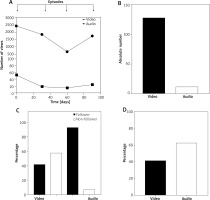Social media platforms such as Instagram, Twitter, Facebook, YouTube and TikTok are increasingly used for diffusion of medical information in different specialties ranging from surgery to internal medicine. Different kinds of content can be shared using these platforms such as pictures, videos and audio content. Only sporadic reports exist in the literature analysing the possible use of these means in the field of allergy and immunology. As an example, Dimov et al. in a review manuscript, described a possible patient education system using the diffusion of action plans and videos via social media. This approach would improve the patient’s disease awareness and medical treatment quality, finally leading to a lower rate of Emergency Department admissions [1, 2]. In fact, it is well known that in clinical conditions such as bronchial asthma and chronic urticaria, long-term treatments are needed (e.g. ICS/LABA, antihistamines and monoclonal antibodies). In the case of long-term treatments, a good awareness of the patient of the disease is useful to guarantee an optimal treatment compliance, avoiding the treatment discontinuation. To this aim, social media might be useful in the diffusion of medical information to patients suffering from allergic and immune-mediated diseases.
In this pilot study we have analysed the performance rate of allergy and immunology-based video and audio contents diffused via Instagram platform.
To this aim we prepared four short videos (mean time: 2.23 ±0.01 min) and four short audios (in the format of a Podcast with different episodes; mean time: 3.54 ±0.02 min). These contents were released every 30 days.
The topics of the created contents were: food allergy, immune privilege, respiratory allergy and allergen immunotherapy.
The videos were recorded using an iPhone 14pro camera and a Rhode SmartlavPlus microphone, the mixing and mastering of the video was made using Adobe premiere Pro cc 2023 software. As for the audio content, we have recorded the episodes using a Rhode NT-1 microphone, using a Focusrite Scarlett 2i2 3d generation. For the subsequent mixing and mastering we used FL Studio Software. Both the videos and audio were diffused using Instagram platform of our Unit (@centro_allergologia_albanesi). Before the diffusion on Instagram the audio contents were uploaded on Spotify platform (Instagram does not allow audio content only). We then analysed the absolute number of reproductions of the video and audio content, the number of interactions with the episodes (quantified with the like-reactions) as well as the characteristics of the audience. In particular, if the spectators were followers or non-followers of the Instagram page.
As shown in Figure 1 A, the video content reached a higher absolute number of views (2403, 1862, 674 and 1738 views) compared to the audio content (52, 19, 15 and 24 views). Likewise, the number of interactions with the episodes are higher for the video content (Figure 1 B). The video content reached 68% of spectators that were not following the Instagram page (Non-followers), while the audio content reached only 7% of non-followers (Figure 1 C).
Figure 1
Number of views of the different episodes for audio (squares) and video (rounds) contents in function of time (days), arrows on top of the panel indicated different episodes (A); absolute number of reactions for video (black histogram) and audio (white histogram) contents (B); percentage of followers (black histograms) and non-followers (white histograms) for video and audio contents (C); percentage of reduction of the audience for video (black histograms) and audio (white histograms) contents (D)

Notably, the number of views of both the contents tends to decrease over time following the first episode. In particular, the video content has a 41% reduction of the audience after 60 days. The reduction of the audience for the audio contents is 63% after 60 days (Figure 1 D).
According to our preliminary results, social media platforms, in particular Instagram, are useful tools in the diffusion of medical information in the field of allergy and immunology.
As expected, the video content demonstrated a better performance rate compared to the audio content in the allergy and immunology field. This observation might be due to the fact that video contents are more engaging for the audience for the concomitant presence of pictures and eventually written items. Moreover, the diffusion of the video contents is wider on the Instagram platform due to the characteristics of the social media platform itself. Indeed, Instagram does not allow the diffusion in the feed of every user of audio contents. This latter point might explain the observation that the video contents reached more non-followers compared to the audio contents. Of note, regardless of the content created, a decrease of engagement over time is observed. Indeed, on social media platforms, in particular Instagram and Twitter, the trending topics are rapidly changing inducing the audience to follow the mainstream trend. Thus, once the content has been created, a mainstream trend should be followed to obtain an optimal audience engagement. The creators should pay attention to the frequency of release of the contents. Indeed this parameter might influence the final diffusion rate. It has previously been demonstrated that false news diffuse faster than true news [3]. Thus, even though social media are useful in the diffusion of medical information, for the content creator it would be useful to i) cite the scientific references; ii) ensure a fruitful scientific discussion, if needed. Finally, more studies possibly combining multiple Instagram pages of allergy and immunology centres would help strengthen these findings.








